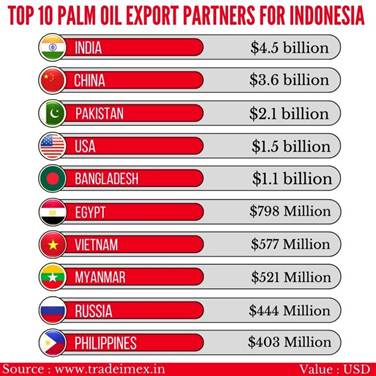Context and Background
- Primary Issue: Ageing palm oil trees, especially in smallholder plantations, are lowering yields, and replanting delays risk a significant supply crisis.
- Geographic Focus: Malaysia and Indonesia – account for 85% of global palm oil exports.
- Trigger: Farmers like Suratmen Mosman (Malaysia) reluctant to replant due to income gap during 3–5 year gestation of new palms and insufficient subsidies.
Relevance : GS 3(Agriculture)

Supply Crisis – Causes and Dimensions
1. Ageing Trees and Declining Productivity
- Trees older than 20 years are past peak productivity.
- More than half of Malaysian smallholder plantations now exceed this age – much higher than official estimate (only 37%).
- In Indonesia, only 10% of the 2.5 million ha replanting target by 2025 has been met (as of Oct 2024).
2. Replanting Crisis
- Smallholders (40% of total plantations) lack financial capacity to replant.
- Subsidies have fallen, and there is no incentive to sacrifice income for 3–5 years during replanting.
3. Diversion to Biodiesel
- Indonesia is pushing higher biodiesel blending mandates (B30, B40), diverting palm oil to domestic energy use.
- Reduces exportable surplus and tightens global availability.
4. Data Underestimation
- Government data likely underestimates the extent of the ageing crisis.
- Field-level assessments by veterans (Dorab Mistry, M.R. Chandran) suggest real situation is worse.
Impact on Global Palm Oil Supply Chain
- Estimated Decline: Combined exports from Indonesia and Malaysia could drop by up to 20% by 2030 over 2024 levels.
- Price Impact: Likely to raise global vegetable oil prices, affecting billions of consumers.
- Volatility: Markets may have priced in slowdown, but deep structural underestimates may cause unexpected supply shocks.
India-Specific Relevance
1. India is the World’s Largest Palm Oil Importer
- India imports ~8–9 million tonnes/year, mostly from Indonesia (60%) and Malaysia (30%).
- Palm oil is essential for cooking oil, processed foods, cosmetics, and soaps in India.
2. Inflationary Pressures
- Any supply disruption → edible oil price inflation, impacting Indian households.
- Has direct bearing on WPI/CPI inflation, especially for food.
3. Push for Domestic Palm Oil
- India launched NMEO-OP (National Mission on Edible Oils – Oil Palm) in 2021:
- ₹11,040 crore scheme to boost domestic cultivation.
- Target: 1 million ha under palm oil by 2026.
- But progress is slow due to:
- Land suitability concerns,
- Ecological worries (especially in NE India and Andaman),
- Farmer reluctance due to long gestation.
Geopolitical and Environmental Dimensions
1. Geoeconomic Fragility
- Overdependence on 2 countries for a vital global commodity creates systemic risks.
- Mirrors OPEC-like concentration but in edible oils.
2. Sustainability and Deforestation Concerns
- Aggressive palm cultivation is linked to:
- Tropical deforestation
- Loss of orangutan and tiger habitats
- Carbon emissions from peatland clearance
- Balancing replanting with no new deforestation is a key sustainability demand.
3. Smallholder Livelihood Crisis
- Millions of farmers across SEA are trapped between rising costs, falling yields, and no support for transition.
- Without targeted intervention, smallholders may abandon plantations or resort to unsustainable practices.
Critical Insights and Policy Imperatives
- This is a structural, not cyclical crisis – ageing trees, not just weather shocks.
- Underinvestment in replanting poses long-term supply risk.
- India must de-risk from palm oil concentration through:
- Diversifying edible oil sources (e.g., soy, sunflower from Argentina, Ukraine)
- Scaling up oilseed missions domestically (mustard, groundnut, safflower)
- India’s foreign policy must include strategic agri-commodity diplomacy with Indonesia-Malaysia.
Conclusion
The palm oil sector stands at a tipping point. Unless smallholders are supported to replant, and demand is better managed, the world could face a structural supply crunch in the next 5 years. For India, it’s a call to diversify sources, scale up domestic production, and shield consumers from edible oil shocks.



